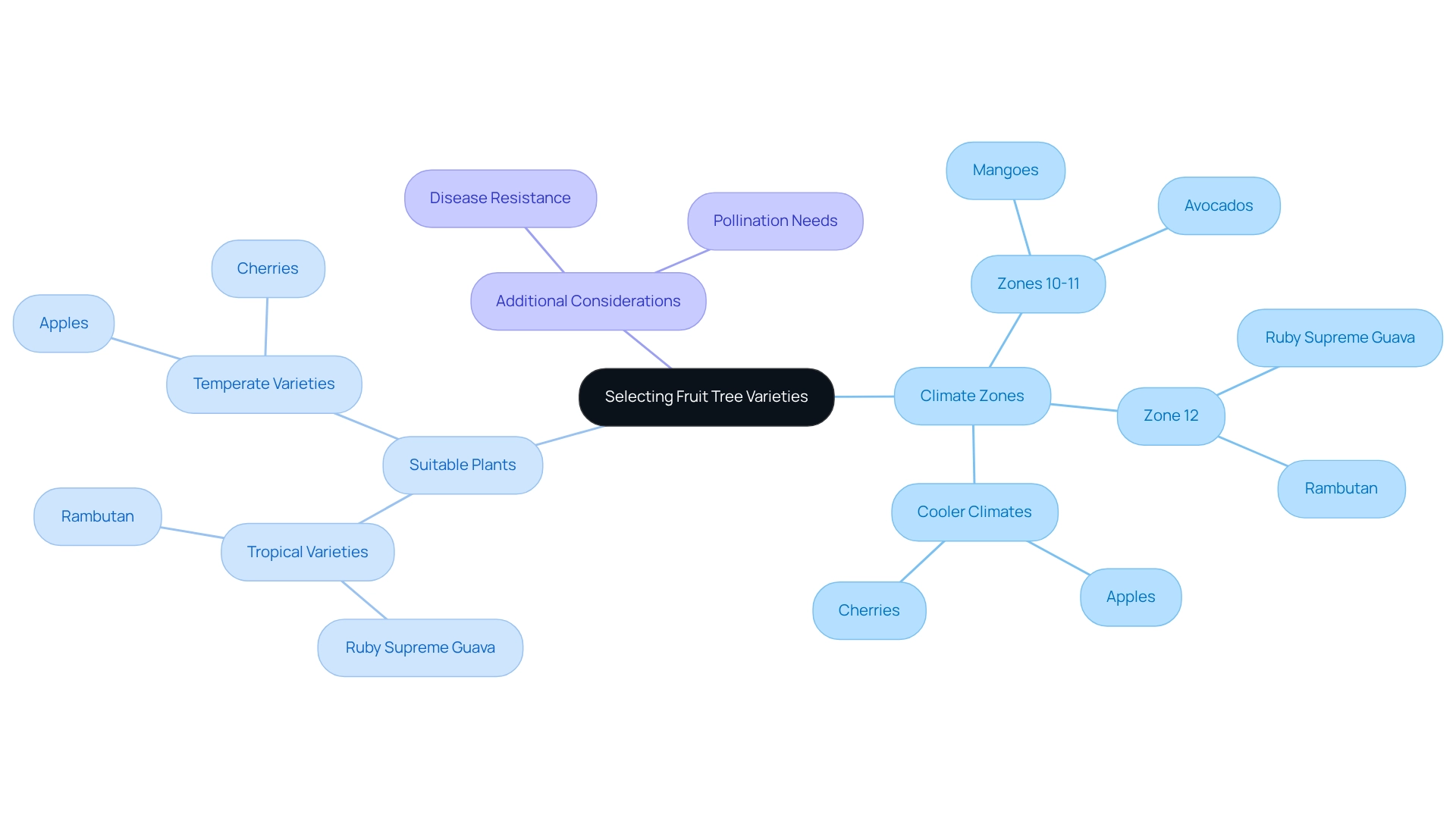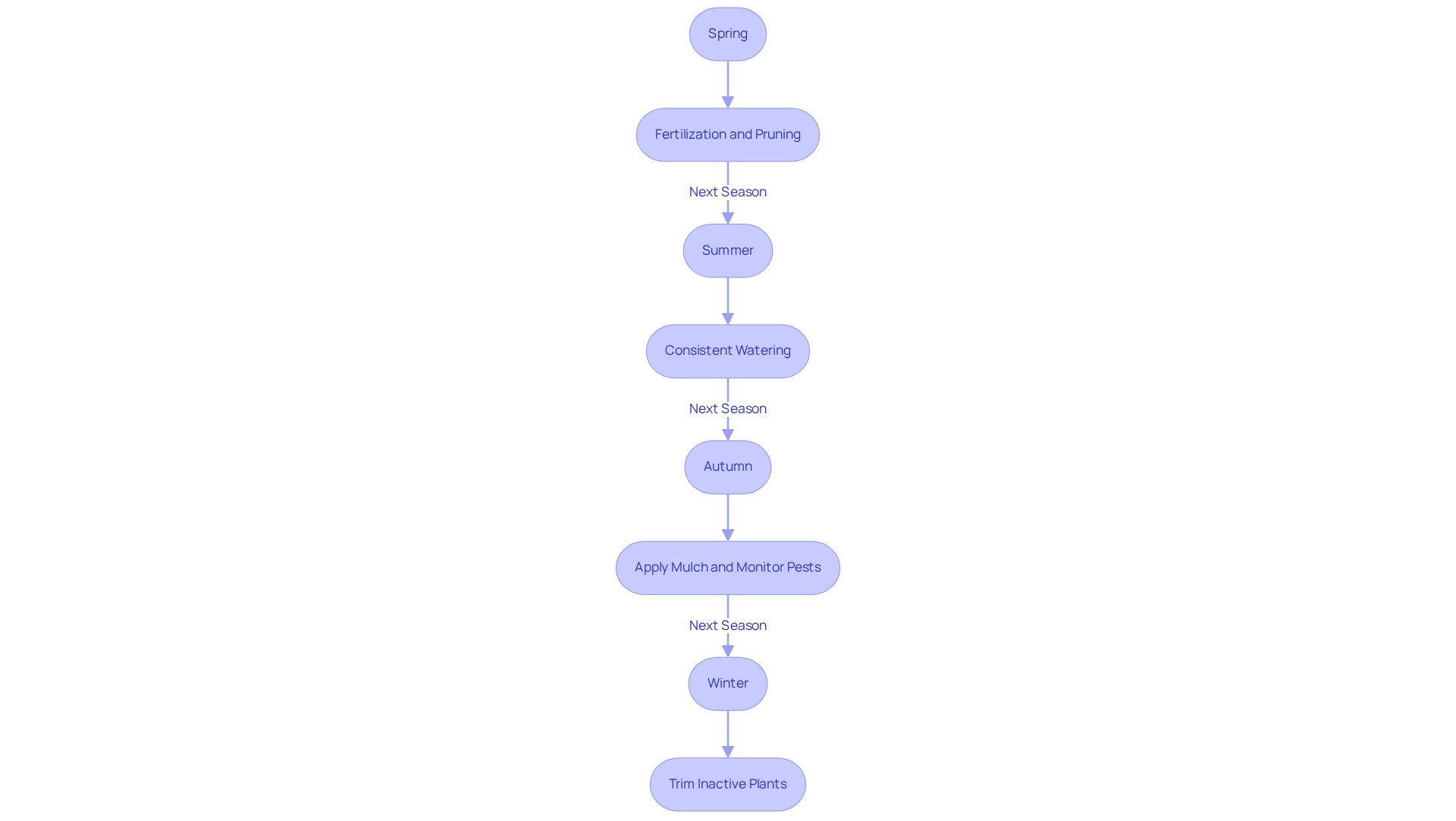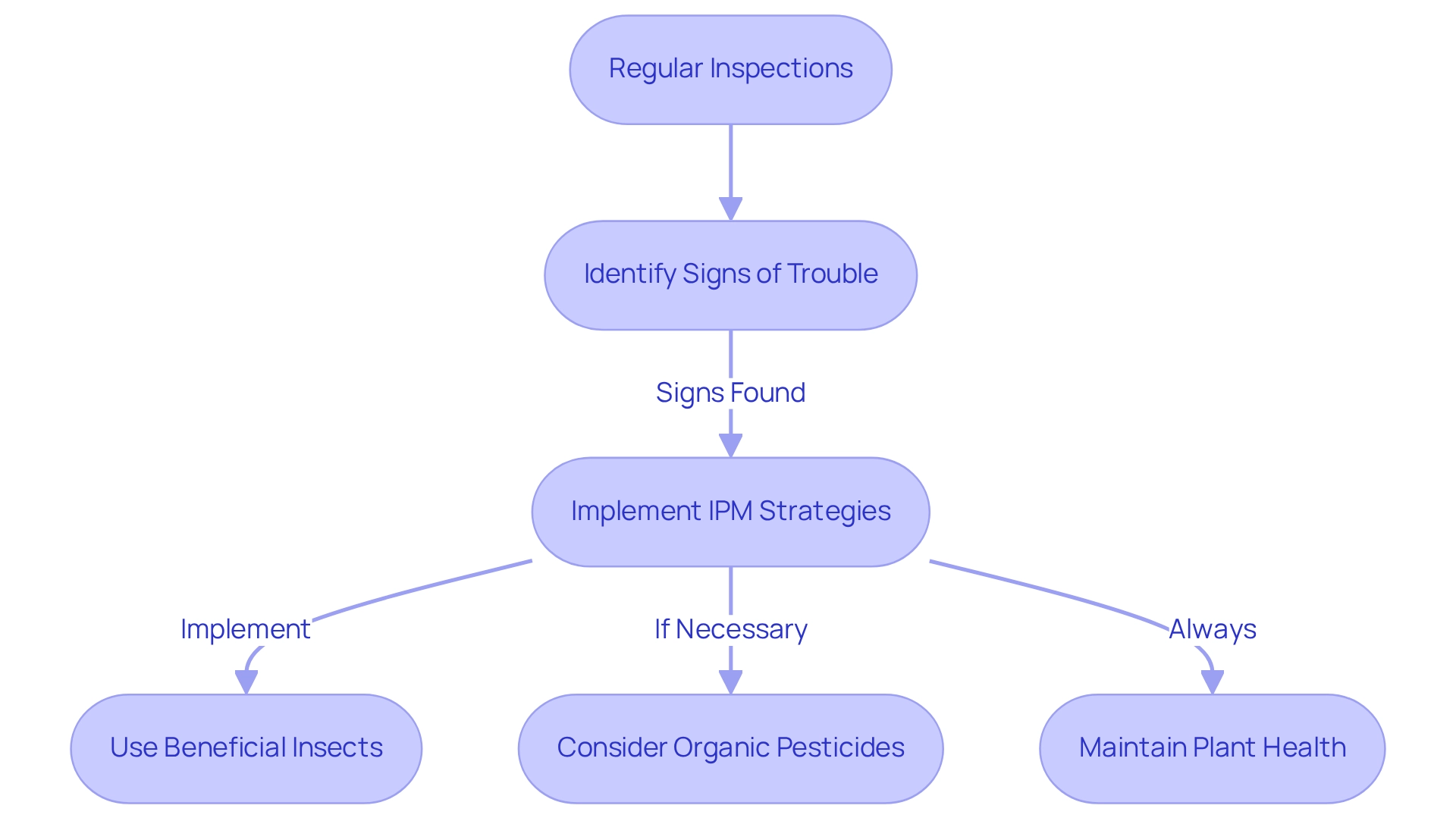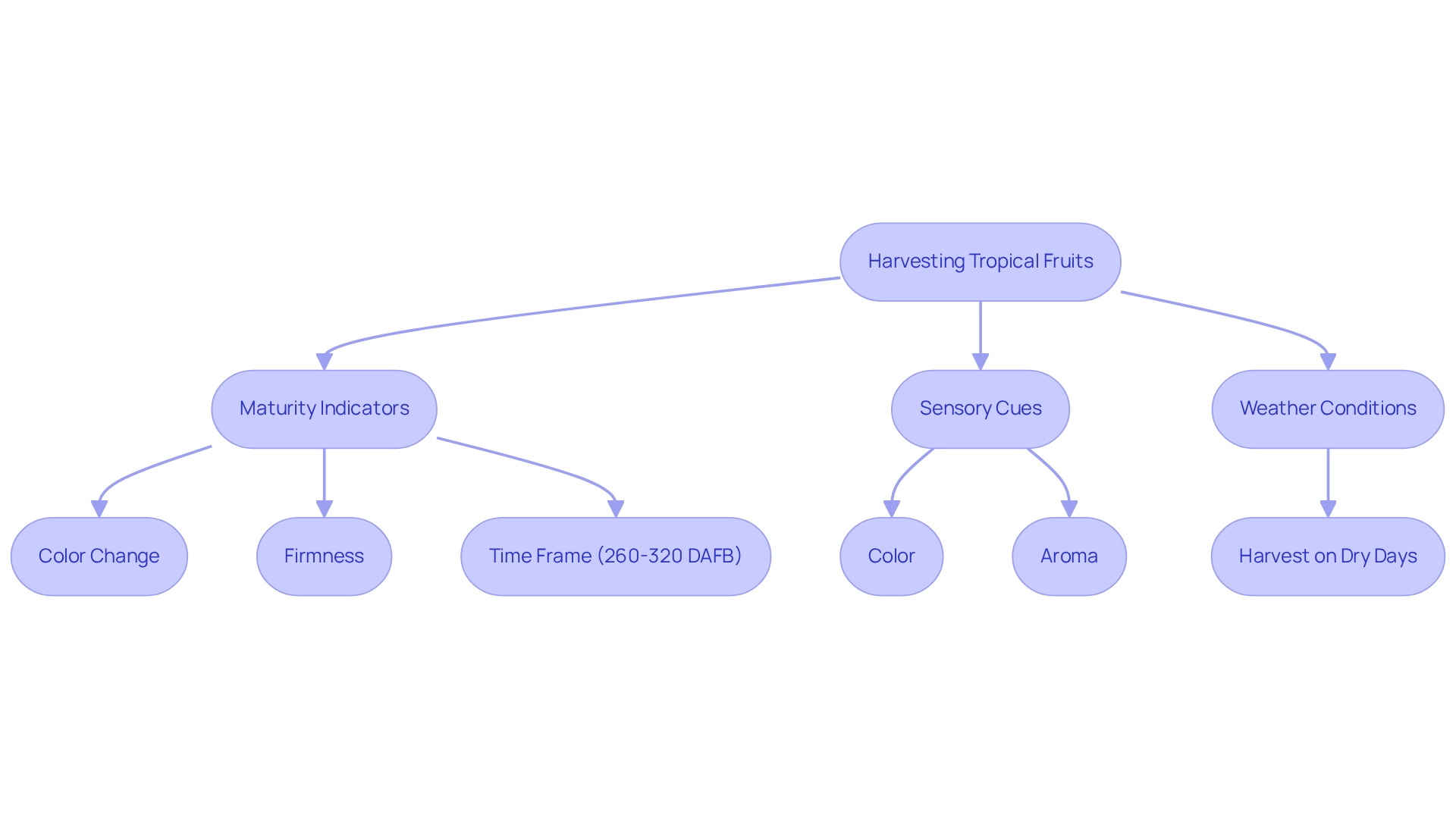
4 Best Practices for Growers of Fruit Trees
Share
For those nurturing fruit trees, the best practices encompass:
- Selecting varieties that thrive in your local climate
- Providing seasonal care
- Managing pests and diseases effectively
- Harvesting at just the right moment to ensure the highest quality
We understand that gardening can present challenges, but by recognizing your local climate conditions and applying tailored care strategies throughout the seasons, you can significantly enhance both fruit yield and quality. Integrated pest management techniques play a vital role in maintaining plant health and sustainability, allowing your garden to flourish.
Imagine the joy of watching your trees thrive, knowing you’ve taken the right steps to support their growth. As you embark on this journey, remember that your efforts matter, and with each season, you have the opportunity to learn and adapt. By embracing these practices, you’re not just growing fruit; you’re cultivating a rewarding experience that connects you to nature. Let's nurture our gardens together, ensuring they bring forth the best harvests possible.
Everglades Farm offers top-quality trees, expert advice, and everything you need to grow a tropical paradise at home.
Introduction
Cultivating fruit trees can be a truly rewarding endeavor, and we understand that success hinges on a multitude of factors that extend beyond mere planting. Have you ever felt overwhelmed by the choices? From selecting the right varieties that align with your local climate conditions to implementing seasonal care practices that nurture growth, every decision plays a pivotal role in the health and productivity of your trees.
As you navigate the complexities of pest and disease management, mastering the art of timing for harvesting at peak quality becomes essential. This comprehensive guide is here to walk you through the essential steps for nurturing tropical fruit trees, ensuring that both novice and experienced gardeners alike can achieve bountiful harvests while embracing sustainable gardening practices together.
1. Select Appropriate Fruit Tree Varieties for Your Climate
Choosing the right varieties of plants begins with understanding your regional climate zone. For instance, tropical plants like mangoes and avocados flourish in USDA zones 10-11, where the climate is warm and rainfall is abundant. On the other hand, varieties such as apples and cherries thrive in cooler climates. By comprehending local factors—like average temperatures, rainfall patterns, and soil types—you can set yourself up for successful cultivation.
The USDA Plant Hardiness Zone Map is a wonderful tool to help you determine which plant varieties are best suited for your area. This resource allows gardeners to identify which plants will thrive based on their specific address or zip code. For example, in regions characterized by extremely high temperatures, such as Zone 12, tropical varieties like Ruby Supreme Guava and Rambutan can be grown successfully, attracting those who love tropical gardening.
When selecting plants, it’s also important to consider factors such as disease resistance and pollination needs. Some plants require cross-pollination to produce fruit, so it’s essential to grow compatible varieties close to one another. Engaging with local gardening groups or extension services can provide you with valuable insights about the best plants for your unique conditions.
Expert advice emphasizes the importance of choosing varieties that align with your climate zone to avoid setting unrealistic expectations. By focusing on the right selections, you can enhance your chances of a bountiful harvest while also contributing to sustainable gardening practices. Remember, each step you take in your gardening journey is a step toward nurturing not just your plants, but also your connection to nature.

2. Implement Seasonal Care Practices for Optimal Growth
Seasonal maintenance for bearing plants is essential for nurturing optimal development and yield. In spring, let’s prioritize fertilization and pruning to encourage healthy growth. Applying a balanced fertilizer rich in essential nutrients is vital during this period. For soursop plants, remember to place them in a well-drained location with plenty of sunlight; this simple step can significantly enhance their growth and fruit production.
As summer approaches, consistent watering becomes crucial, especially during dry spells. Deep watering once a week is recommended over shallow, frequent watering, as it fosters deeper root development, which is key to the plant's stability and health.
When autumn arrives, prepare your plants for winter by applying mulch around their bases. This practice helps retain soil moisture and protects roots from freezing temperatures. Additionally, keep an eye out for harmful organisms like aphids and scale insects that may affect soursop plants, and don’t hesitate to implement organic management techniques as needed. During winter, focus on trimming inactive plants to shape them and remove any dead or unhealthy branches, which could hinder growth in the upcoming season. Throughout the year, it’s important to consistently monitor for pests and diseases, adapting care methods based on your observations to ensure your plants thrive.
Incorporating organic matter and phosphorus-rich amendments can greatly improve root development, leading to better nutrient absorption and overall plant health. A case study on fertilizer application methods highlights the importance of uniform distribution to promote growth and yield while minimizing harm to the trunk. By following these seasonal care methods, particularly for soursop and passion plants, we can nurture flourishing gardens that yield plentiful harvests. Notably, Everglades Farm has received an impressive 79% of reviews rating their service as five stars, showcasing their dedication to quality and customer satisfaction. This underscores the significance of proper care practices in achieving fruitful results.

3. Manage Pests and Diseases Effectively
To effectively manage nuisances and diseases in our beloved tropical fruit trees, it’s essential to start with regular inspections. Look out for signs of trouble, such as discolored leaves or unusual growth patterns. Understanding that infestation damage can lead to significant economic losses—estimated at around $120 million for growers of fruit trees due to just a 5% impact—highlights the importance of proactive management.
We can implement integrated management (IPM) strategies that include cultural, mechanical, and biological controls to support growers of fruit trees. For example, introducing beneficial insects like ladybugs can greatly reduce aphid populations, fostering a healthier ecosystem around your trees.
While organic pesticides should be considered a last resort, if you must use them, apply them during the dormant season to minimize harm to beneficial insects. It’s vital to sustain plant health through proper hydration and fertilization, as strong specimens are naturally more resistant to insects and diseases. Additionally, keeping the area around the trees tidy and free of litter can help reduce potential hiding spots for pests.
Engaging in frequent discussions with local extension services can provide valuable insights into common insects and recommended control techniques. This ensures that our management strategies remain effective and well-informed. A case study on integrated insect control management (IPM) in agriculture showed that this approach resulted in a remarkable 95% reduction in insecticide applications while maintaining or even increasing crop yields. This demonstrates that food production and ecosystem sustainability can indeed thrive together.
By adopting these nurturing practices, we can cultivate a flourishing garden that balances productivity with ecological sustainability. Remember, recognizing pests early is crucial; familiarize yourself with common pests that affect tropical plants so you can respond promptly and effectively.

4. Harvest Fruit at the Right Time for Maximum Quality
To ensure the optimal quality of your produce, it's essential to understand the specific maturity indicators for each type of tropical plant. For mangoes, the ideal time for harvest is when they begin to change color and yield slightly to gentle pressure—this indicates ripeness. On the other hand, avocados should be picked while still firm, as they will continue to ripen off the tree. Sensory cues such as color, firmness, and aroma are crucial in assessing ripeness. Additionally, consider the weather conditions; harvesting on a dry day helps minimize the risk of bruising and spoilage.
Research shows that the optimal time frame between 260 and 320 days after flowering (DAFB) can maximize yields and improve the qualitative traits of tropical produce like mangoes and avocados. Keeping a detailed harvest log can be incredibly beneficial. This practice allows you to track the best harvest times across seasons, ultimately improving the quality of your yield.
For mangoes and avocados, utilizing physical maturity indices—such as color, shape, size, weight, and firmness—ensures they are harvested at their peak. This method not only enhances the quality of your produce but also boosts its marketability. As noted in various case studies, implementing selective management strategies based on spatial data during the harvest period can lead to improved efficiency and better alignment with market demands. By understanding these indicators and techniques, growers of fruit trees can significantly enhance their harvesting methods, ensuring that their tropical trees yield the best possible outcomes.
While our focus is on mangoes and avocados, remember that other fruits, like bananas, also require careful timing for optimal flavor development post-harvest. Embrace the journey of gardening, and with these insights, you'll nurture your plants to thrive beautifully.

Conclusion
Cultivating tropical fruit trees can be a truly rewarding journey, filled with joy and satisfaction. It begins with the important task of selecting the right varieties that thrive in your local climate. Utilizing resources like the USDA Plant Hardiness Zone Map can guide you in making the best choices. By opting for disease-resistant varieties and understanding their pollination needs, you can significantly boost your chances of enjoying a fruitful harvest.
Caring for your trees throughout the seasons is essential for promoting their healthy growth. Regular fertilization and pruning in spring, consistent watering during dry spells, and vigilant pest monitoring year-round are key practices. Embracing organic pest management not only protects your trees but also nurtures the ecological balance of your garden.
Effective management of pests and diseases is vital for sustaining the health of your trees. Conducting regular inspections allows for the early detection of any issues, while integrated pest management strategies can minimize the reliance on chemical treatments. Don’t hesitate to consult local experts; their insights can ensure that your pest control measures are both effective and tailored to your unique conditions.
Lastly, harvesting your fruits at the right time is crucial for achieving optimal quality. By understanding the maturity indicators for different fruit types and considering environmental factors, you can ensure that your fruits are picked at their peak, maximizing both flavor and marketability.
In summary, successful tropical fruit tree cultivation requires careful selection of suitable varieties, diligent seasonal care, effective pest management, and timely harvesting. By embracing these practices, you can enjoy a bountiful and sustainable gardening experience, enriching your life and contributing to a healthier ecosystem. Remember, every step you take in this journey brings you closer to your gardening dreams.
🌱 Ready to Cultivate a Thriving Garden?
Whether you’re harvesting mangoes or planting a new exotic tree, Everglades Farm is your go-to nursery for healthy plants and expert growing tips.
👉 Learn more about Everglades Farm
Grow smart, grow happy—with Everglades Farm.
🔗 Explore More:
- Fast Growing Trees
- Dwarf Fruit Trees
- Exotic Trees
- Indoor Plants
- Fertilizer
- Fruit Trees Collection
- Best Sellers
- About Everglades Farm
Frequently Asked Questions
How do I choose the right varieties of plants for my garden?
Choosing the right varieties of plants begins with understanding your regional climate zone. Factors such as average temperatures, rainfall patterns, and soil types are crucial for successful cultivation.
What is the USDA Plant Hardiness Zone Map?
The USDA Plant Hardiness Zone Map is a tool that helps gardeners determine which plant varieties are best suited for their area based on their specific address or zip code.
What types of plants thrive in USDA zones 10-11?
Tropical plants like mangoes and avocados flourish in USDA zones 10-11, where the climate is warm and rainfall is abundant.
Which plants are suitable for cooler climates?
Varieties such as apples and cherries thrive in cooler climates, making them suitable for regions with lower temperatures.
What should I consider when selecting plants besides climate?
It's important to consider disease resistance and pollination needs, as some plants require cross-pollination to produce fruit, necessitating compatible varieties to be grown close to one another.
How can I gain insights about the best plants for my local conditions?
Engaging with local gardening groups or extension services can provide valuable insights about which plants are best suited for your unique conditions.
Why is it important to choose varieties that align with my climate zone?
Choosing varieties that align with your climate zone helps avoid setting unrealistic expectations and enhances your chances of a bountiful harvest while contributing to sustainable gardening practices.


